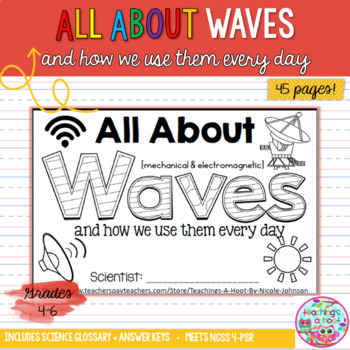All About Waves NGSS mini-book
- PDF
What educators are saying
Description
This 45-page science mini-book was created to help teach the Next Generation Science Standards for 4th grade 4-PSR (Waves and their applications in technology for information transfer), but it could also be used with 5th or 6th graders because I added some additional information beyond the standard.
This mini-book covers the following principles: what is a wave, what are mechanical waves, sound waves, water waves, seismic waves, spring waves, what are electromagnetic waves, radio waves, microwaves, infrared waves, light waves, ultraviolet rays, x-rays, gamma rays, wave properties (amplitude and wavelength), can waves move things, wave patterns and communication, drum codes, Morse Code, echolocation, sonar, radar.
I made sure to cover everything required in the NGSS for this topic and tried my best to make the material 4th-6th grade friendly!
Worksheets in the booklet allow students to: color-code waves, make lists, draw what they know, draw & label models and waves, match waves, cut & paste, sort waves, solve problems using wave patterns, create their own problem, and write facts they learned about waves (offered in both a graphic organizer and lined page format). I've also included 2 optional activity pages: listen, think, write (for read-alouds) and read, think, write (for independent reading) in half-page and full-page formats.
A science glossary of important terms + partial answer key is also included.
This document is in a half-page format (two to a page) to save paper and make copying class sets quicker and easier. This smaller format also allows pages to be glued into interactive notebooks. Enjoy! =)
Be sure to check out the other NGSS mini-books in my store. More NGSS products are in the works for other grades!





